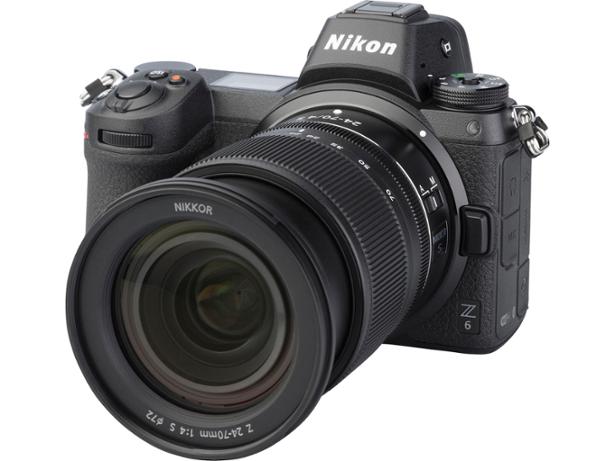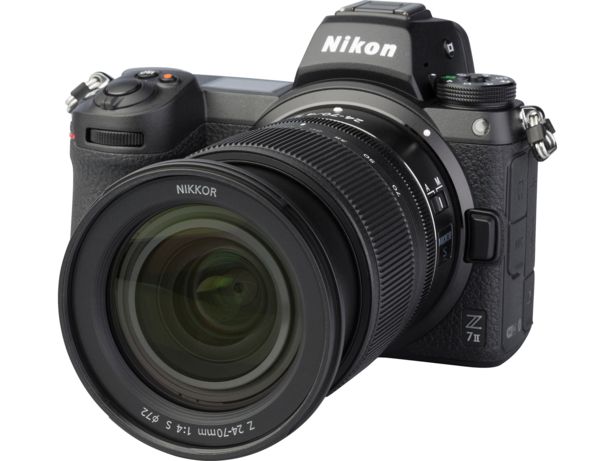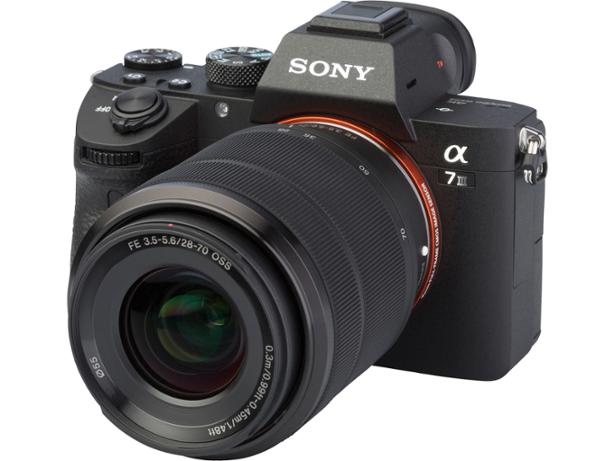How to shoot and edit photos like a pro

Improving your photography skills takes time, passion and discipline, and the tools at your disposal will depend on the type of camera you're using.
However, there are a few simple techniques you can pick up straight away, whether you're taking a photo on a smartphone or a high-end DSLR. Our tactics can help you compose the perfect shot, or fine tune your masterpiece in an editing suite.
To take the pressure and uncertainty out of buying a new camera, we've done loads of research in our labs to work out which cameras will give you the best chance of nailing your shots. If you're on the market for a new device, or you just want to see what's out there in this ever-changing market, our expert reviews can help you choose a camera that will make taking the perfect shot easier.
If you're not sure where to get started, or even what kind of camera you need out of compact, bridge, DSLR and mirrorless, take a look at our guide to which type of digital camera should you choose?
Step one: Choose the right camera settings
Every device offers you tools and options to help adapt your shot to the circumstances. These can help you get the perfect shot whether your subject is whizzing by, shrouded in the dark or trying to stand out from the scenery. Some of the key settings to take a look at are:
Camera shutter speed
This setting decides how much time your camera needs to take a photo. Lightning-quick shutter speeds are necessary to capture fast moving objects such as birds in flight or bodies in movement. A slower shutter speed will mean moving subjects are blurred, though sometimes this can create interest visual effects, such as showing rain as long streaks rather than static dots.
High-end cameras can reach staggering shutter speeds like 1/4000 of a second, or even 1/10000 of a second, but you can turn the speed down as you need. Cheaper cameras and smartphones are innately slower, and are unlikely to have many (if any) options to change the shutter speed.
Aperture controls
By controlling the depth of field, you can choose whether the background is sharp or blurred. Whether you're taking photographs of broad vistas or you want to pull the attention onto the subject in the foreground, this is a key technique for composition. A shallow depth of field will only put the foreground in focus, while a deep depth of field will sharpen the horizon.
On a digital camera, the easiest way to do this is by using the aperture (f-stop) of your lens. It goes like this:
- A large aperture = a small f-number = a shallow depth of field.
- A small aperture = a larger f-number = a deeper depth of field.
Smartphone cameras have ways of achieving this too. Portrait modes such as those found on later-generation iPhones will find the subject with autofocus, then blur the rest of the frame. Samsung's DepthVision Camera on its newer Galaxy phones, including the Galaxy S20+ and S20 Ultra, lets you switch between foreground and background focus.
Other key settings:
- 'Raw mode' makes it so your photos aren't compressed (so they don't lose any quality). This is preferred by professionals over file types such as JPEGs, which take up less space because they are smaller files.
- If you're shooting in the dark, turn the ISO up. The higher you go, the more your camera brightens the image. Watch out for added grainy effects the higher you go. Ultimately, it's a trade-off.
- Flash will help you light the scene and capture a subject in the dark. Interestingly, in-built flash is a feature that becomes less common in high-end cameras and is nearly universal in smartphones. However, the actual strength of your flash will vary depending on the hardware you buy, and you can get a flash attachment for a premium DSLR/mirrorless that suits more demanding tasks such as photography in bars and nightclubs.
Are you looking for a camera that offers you advanced control over your shots, including lenses you can swap out? Take a look at our DSLR camera reviews or mirrorless camera reviews.
Step two: Get the photo composition right
Once you have the hardware you need set up properly, it's time to take the shot. There may be times when luck or good timing is the key factor in a great shot but, if you can, take a few moments to think about the best way to frame your photo.
The rule of thirds
The rule of thirds is one of the first lessons budding photographers will learn. It's a golden rule that helps you position the subject of your photograph in a way that's more pleasing and interesting to the human eye. This will help you compose interesting shots that go beyond having the subject in the centre of the frame.
Look through your camera's settings to find a grid option. If you can't find one, you can imagine a grid.
The idea is to divide the frame into thirds, both horizontally and vertically, with a 3x3 grid. The main subject of the photograph – the man, in the example above – should sit on a vertical line or an intersection. If you have the positions right, your subject will sit to the right or left of the centre, and the picture won't look split down the middle.
This technique goes back centuries. Take a look through your camera's settings and experiment with different positions, and your photos should look more dynamic.
Capturing moving images
If you're satisfied with your shutter speed, the best way to capture moving objects is to use burst mode. This is also called continuous shooting, and it's where you capture several photos in quick succession.
This takes some of the pressure off you and means you can look through several frames and pick the best one. If you need a split-second shot, this will be a must-use technique.
Pay heed to your surroundings
When you're shooting a subject, you need to decide whether you want the background to feature or not. This harks back to the aperture setting we discussed above and whether you want a shallow or a deep depth of field.
If the landscape is the subject, consider how you can bring it to life. The above photo is shot on a slow shutter speed to capture the movement of the stream, and the perspective gives it a sense of depth which brings it to life.
You should also keep track of where the light is coming from. If you're outdoors, the position of the sun matters - you'll want it behind you or to the side of you if you want to avoid having it interfere with your photo. On the other hand, you can shoot against the sun to create stunning images with some camera trickery. For example
- If you move so that the sun is mainly obscured but its edges are visible, and you turn down the aperture of your lens, you'll get an incredible 'starburst' effect where the sun explodes in the frame.
- You can also create silhouettes by placing underexposed subjects in front of a bright source.
Camera sensors take in as much light as they can when they create a photograph, so the better lit the scene is, the higher quality the photo will be.
If you want to take great photos with a lightweight camera ready for an adventure, take a look at our digital camera reviews.
Step three: Perfect your shot with photo editing
Editing has become so common it's rare to see a published photo that's genuinely untouched. Some photographers use their phones or computers to enhance photos, editing colours, adding effects and creating composites where two or more images are merged into one.
More serious photographers prefer subtle editing practices to keep the photo looking as authentic as possible. But don't be fooled – sometimes the most realistic-looking photos have been touched up extensively, but a skilled editor has been able to pass it off as realistic.
Use the right software
If you're serious about becoming a pro, you'll want to use the same software that professionals use and start with the basics on a trial membership. The most popular choice for this is Adobe Photoshop, but don't discount alternatives since many of the key tools editors use are shared across services.
Pick your photo-editing tools
Some tools and options are common across different programs. Some of the most common include:
- A skin-smoothing/surface blur tool which airbrushes skin and removes texture.
- Preset filters which create moods in photographs, or cause them to fit certain styles such as noir or vintage photography.
- Cropping tools, ranging from the basic crop box which cuts out borders, to the lasso tool which allows you to draw freehand around an area and edit within the area, or crop around it. This is how you cut people and objects out of photographs.
- Using layers to edit non-destructively by stacking images on top of other images. This is how you can edit parts of a photo and work on them independently. When you're done, you can 'rasterise' the image to compress all the layers and come out with one file.
If editing still feels like cheating to you, aim to take authentic snaps which match or even outdo heavily edited snaps. Just bear in mind that some visual features which we often see in professional photos, such as extremely vivid landscapes and Vogue-ready skin, are products of post-processing, and not what you can expect from capturing reality.
Looking for a smartphone you can take and edit pictures on? Check out our mobile phone reviews and look for the models with high ratings for camera quality.


